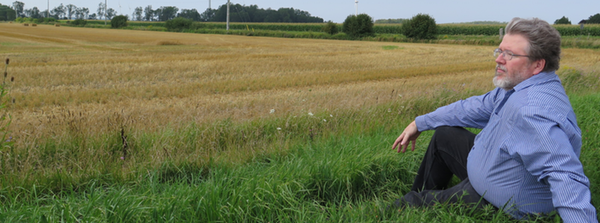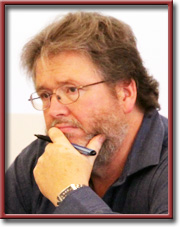An Ocean of Grass, A World of Song
“Mornings began with a chorus of robins and settled in to a melodious, free-form but regular cadence of wrens, sparrows, meadowlarks, blackbirds, and goldfinches. That orchestra has now changed; its music more constricted; its concerts fewer and less noticeable. There seem to be two processes at work: the birds are becoming scarcer and the songs fewer, but many of us seem now to be less in a position to notice.”—By William Ramp
Small Things Recollected
By William Ramp
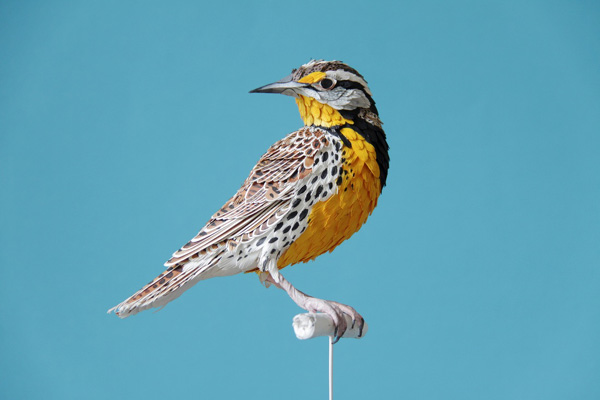
LETHBRIDGE Alberta, Canada—(Weekly Hubris)—6/23/2014—The topic of this month’s column emerged by accident and took me by surprise. I had another idea in mind; less about small things than a big issue: how to respond to the latest Intergovernmental Panel on Climate Change report (IPCC, Fifth Assessment Report, Climate Change 2014: Impacts, Adaptation, and Vulnerability, online at http://www.ipcc.ch/report/ar5/wg2/) which appeared to indicate, in carefully-vetted language, that several major consequences of climate change are no longer prospective, but inevitable, and that attention must now shift urgently to mitigation and coping. Such issues are not unrelated to the following meditation, though the focus is different.
I recently paid a visit to my father and mother, now retired from farming along the north shore of Lake Erie, in southwestern Ontario.
On a whim, I brought with me for my mother a commemorative coin featuring the eastern meadowlark, a bird eclipsed in literary fame by its western cousin, but just as musical, and beloved of many farm folk. My parents mentioned that declining numbers of killdeers had been noted in the local paper that spring. My father said he’d not seen a bobolink in years; this black, buff, and white denizen of old-style hayfields is now designated as a “species at risk,” (Ontario Ministry of Natural Resources, “Bobolink & Eastern Meadowlark in Ontario: Ontario Recovery Strategy Series, 2013“) and is the subject of restrictions on haying practices in Ontario to protect its nesting sites (Nancy Tilt, “Farmers struggle with the implications of the bobolink’s listing,” Ontario Farmer, March 18, 2011).
The eastern meadowlark and barn swallow are also listed as at risk, and killdeer numbers are now noticeably declining. (Birdlife International, “Case Studies: State of the World’s Birds, 2013.)
These are all birds I remember, visually, aurally, and as avian personalities, from a farming childhood. Barn swallows were our chore-time companions, building their mud nests on wood beams within eyesight of roaming barn cats, but safely beyond their reach. Their chatter, a cheery “Chebeek! Chebeek!” as they wove in and out of open doors and windows accompanied the clatter of milk pails and the chewing of cows. During haying, they ran figure-eights through the plume of dust off the baler, snapping up flying insects.
Coming back from the fields at dusk, we grew used to the ruses of killdeers as they ran in front of the tractor, one wing dragging in the dust, luring us (so they thought) away from their nests. I remember my father once moving a kildeer nest out of the way of machinery, cradling a hatchling in his hands; a ball of fuzz on impossibly spindly legs. Mornings began with a chorus of robins and settled in to a melodious, free-form but regular cadence of wrens, sparrows, meadowlarks, blackbirds, and goldfinches.

That orchestra has now changed; its music more constricted; its concerts fewer and less noticeable. There seem to be two processes at work: the birds are becoming scarcer and the songs fewer, but many of us seem now to be less in a position to notice.
One can take changes in agricultural fieldwork as a very small illustration. In my great-grandparents’ time, work in the field was accomplished by hand, horse, and horse-pulled machinery. The machines were not silent, but both their pace and the noise they produced did not efface a sense that the field was an avian as well as a human space. The introduction of tractors altered that sense; the steady burble and roar of engines and the clatter of machinery liberated from the ground-geared driving wheel introduced a sound-scape that overwhelmed the subtle interweaving of birdsong and the hiss of wind-bent grass. And attention to clutch, brake, and steering-wheel meant that the pace of work was neither limited by the will of animals nor as amenable to the sudden up-flurry of a nesting bird. Later still, air-conditioned enclosed cabs (with sound systems) saved farmers’ hearing and rendered them less vulnerable to fatal overturn injuries, but also insulated them further from their ambient surroundings.
I grew up in the tractor-world, but I still noticed and appreciated birds, though without my mother’s detailed knowledge of what exactly I was hearing. I have no doubt that there are farmers who, even today, open their cab doors, still their engines, and listen. But a broad accumulation of changes, some massive, others individually insignificant; some arresting, others imperceptibly gradual, have altered not only attention to birds, but also their conditions of existence.
The avian ambience in which I grew up was, as I did not know then, part of a world that begins patchily in the St. Lawrence lowlands and around the Great Lakes of my boyhood, and extends to the Rocky Mountains visible from where I now live. It runs from the Gulf Coast to the Arctic, punctuated by hills, ridges and occasional woodlands, and interspersed by slow, stately rivers, creeks, lakes and sloughs. It is an enormous, grassy ocean, which awed the first Europeans to traverse it.
Today, that awe is harder to come by; the plains are necklaced by transportation and utility lines, and cross-hatched by property and political boundaries. Especially from highways, they can seem mere empty distance, punctuated by billboards, between one rest stop or destination and the next. Today, with few opportunities to stand alone in the midst of hundreds of thousands of acres of grass, we are too small and too busy to sense its overwhelming vastness.
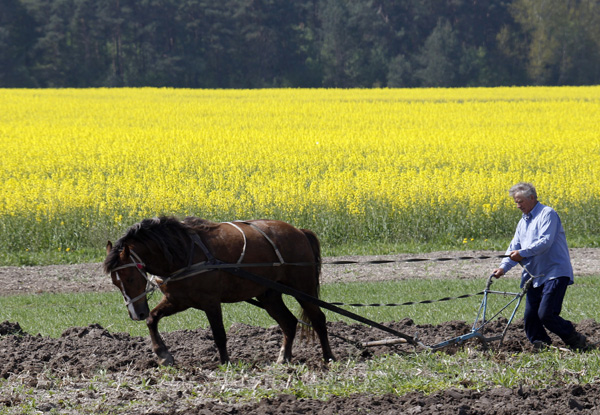
This world is still home to millions of grassland and water birds. But they are in trouble. Quietly, their numbers have been tumbling. Ornithologists have noticed; see for example, Bridget Stuchbury’s The Silence of the Songbirds: How We Are Losing the World’s Songbirds and What We Can Do to Save Them (HarperCollins 2007). So too have literary and activist lovers of the grasslands, such as Trevor Herriot, whose Grass, Sky, Song: Promiseand Peril in the World of Grassland Birds (HarperCollins, 2010) I recommend to anyone who appreciates perceptive insight in graceful prose.
Those of us who work within a European-origin cultural framework are heirs to 400 years of thinking in terms of analysis, planning, project-management, and technical solutions. Our questions are, almost instinctively, “What’s the cause of the decline? How can we fix it?” Alas, the answering oracle does not speak with a single voice nor offer easy answers.
Stuchbury points out that grassland birds are migratory; their habitat changes with the seasons. Each destination is fraught with unique dangers, and the jurisdictions which govern them communicate with each other more readily in terms of local and national interests than the needs and ways of migratory birds. The journeys themselves, often of astounding length from tropics to arctic, are marked by a myriad of obstacles and hazards. At different points in the seasonal cycle, avian mortality or failure to reproduce has various causes, occurring separately by location but interacting over the migratory trek. These include loss of habitat to urban development, agriculture, and the effects of climate change, and—just as damaging—habitat fragmentation.
New farming practices produce vast amounts of fructose, fiber, biofuels, protein, and starch, but monocultural cash-cropping and its associated herbicidal practices turn fields into food-deserts for birds. At the northern end of their pilgrimage, boreal-forest logging, mining, and oil developments threaten. In the far south, the issues may also include poorly-regulated or badly-administered pesticides. In between, there are competitive, invasive species, introduced parasites, domestic cats, urban lighting, office towers, residential picture-windows, and wind turbines.
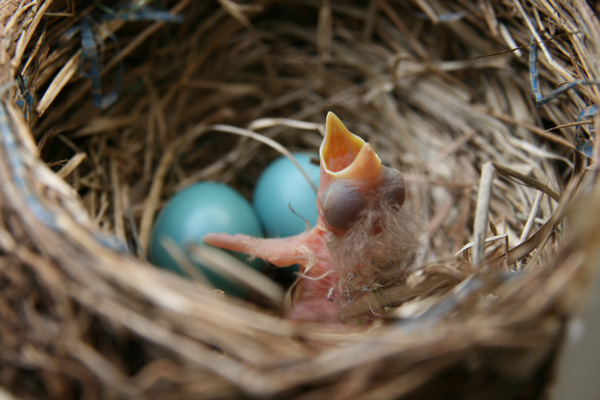
There are also issues of perception. The decline is not even across the entire plains. Blame is easily assigned to other jurisdictions. And the near-disappearance of some grassland species is balanced by a robust number of (often urban-adapted) survivors, like the robins who wake me far too early on a June morning, cockily survey me from the lawn fence, and send me to sleep in the long dusk with an oddly melancholic “Cheerily-cheerio.” Or mourning doves, announcing to the hay-harvester’s (and now the sunbather’s) chagrin, “More rain-rain-rain.” For the casual hearer, their persistence masks a larger but less-obvious change.
What is ironic about the decline of grassland, slough, and shrubsteppe birds like the meadowlark, bobolink, killdeer, and several sparrows is that, from an agricultural standpoint, they are natural pesticidal and even crop-production agents.
Birds control insect populations, and along with honeybees (also now in trouble) play roles in pollination and in (non-agricultural) seed distribution. The potential collapse in their numbers threatens more than the decimation of a songscape. It is both a signal of, and a factor in, food issues that may soon face us all in one way or another.
The localities of my boyhood are still largely agricultural; from their care-home windows, my parents watch the round of farming activities in fields next door. But these days, a variety of livestock and a patchwork of small fields has been replaced by broader swathes cleared of old field-boundaries and now-useless outbuildings. Cash crops and large cattle or dairy operations have displaced mixed farming. The regularity of the Ontario concession-road defined by original hundred-acre lots—every few-score yards, a verandah-ed brick or frame house with a group of English or gambrel-roofed barns —has given way to houses severed by economic and legal instruments from the land that occasioned their construction; the barns slowly collapsing like injured cattle to the ground. The new, larger and less numerous outbuildings are lower, modular, more efficient. Swallows still nest in the ruins of the old; the new are far less friendly. Farm gates sport no-trespassing signs or direct visitors to call a number; a consequence of fears about biohazards and the spread of imported diseases. Signs along crop fields indicate which seed-and-herbicide system is presently in use.
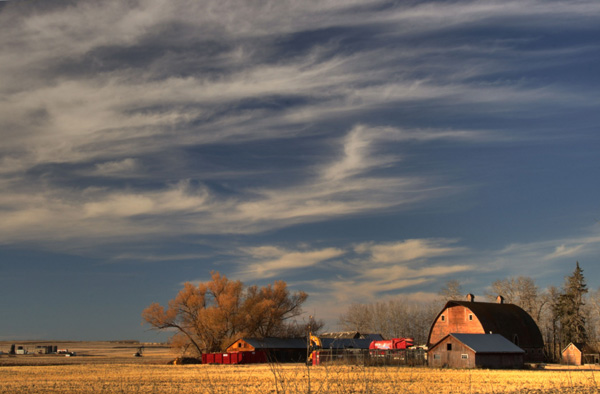
These fields are still enormously productive, but that productivity entails a reliance on expensive machinery and cheap diesel fuel, fertilizer, agricultural chemicals and, often, subsidies of one sort or another. It is also linked, for better or worse, to a more tightly global and export-oriented agricultural commodity trade system, though national and sectoral protective policies still play a role in it.
However, contrary to what many who use the term believe, not all of those who work in the world of “industrial agriculture” are oblivious to environmental issues. So-called “zero-till” agriculture addressed a concern among large as well as small producers about soil-loss and degradation, and their attendant costs. Zero-till is often incorporated into husbandry systems dependent on herbicides and pesticides, but in future, concerns about their side-effects on pollinators may, one hopes, lead to more bird- and bee-friendly practices.
However, modern mainstream agriculture often operates on thin margins. The continued existence of subsidies and trade protections speaks in part to this. For years, the mantra in agriculture was “get big or get out,” but bigger has not meant more security. Droughts and aquifer depletion, salinity, bad weather, commodity-price shifts, foreign restrictions on imports, the price of oil; all could devastate entire regions and farming sectors. An uncertainty-driven fixation on the near-term bottom line can restrict an ecological vision and shorten its temporal reach.
It can be argued that today’s agriculture is little more economically blinkered than that practiced by the 19th-century settlers of my boyhood plains, as described bluntly by a contemporary:
“They know not how to enjoy a joke, to quaff the social bumper. They have no life, no animation, no desire, no consideration save in and for the possession of ‘Hard Cash.’ Care, caution and calculation sit ever upon their brow, and they have not the least soul, save for ‘Improvements,’ ‘Water Privileges,’ for saw and flour mills and any other method or contrivance for accumulating wealth. (William Pope, quoted in Harry B. Barrett, The 19th-Century Journals and Paintings of William Pope. Toronto: M. F. Fehely Publishers Ltd., 1976, p. 87)
Many in this settler Arcadia cared not a fig for birds except as a food source or an obstacle to profit. Not everyone is by nature a sensitive soul. Even in the context of climate-driven food crises and their attendant geopolitics, it can seem frivolous to worry about a world deprived of birdsong and its listeners. As was pointed out to me by someone with whom I discussed this column, those motivated to hear and to care about birds will still find ways to do so: the driver of today’s tractor-seeder-fertilizer tandem can still stop and open his cab door. That is, if there is anything left to hear.
Grassland birds are our metaphorical canaries in the coal mine. In the suburb, on the plain, and in the boreal forest, they sing under threat of a silent and silencing death, in spaces far harder to compass than shafts or tunnels. What their faltering voices communicate is our lack of communication: jurisdictional isolationism that fragments policy; a separation of production and consumption that feeds mutual incomprehension; an inability to comprehend the complexities of ecosystems that allows faulty solutions to nestle within the neat and comforting confines of project-management. This lack signifies a communicative and practical separation from the land itself, not only as a visual and material environment, but also an auditory and participatory one.
The justly-famed Cornell Laboratory of Ornithology has produced an interactive online bird guide that allows the user to listen to birdsong clips, arranged by species, genera and region. This is a laudable effort, but in the present context, it has something of the feel of a recuperative archive, a bibliography of lost works. It cannot replace standing in grassland at dawn.
A chance conversation with my parents gifted me this column, and may inspire a sequel. As I left the facility in which they now live, heading for the airport, and before I began to worry about time, I rolled down the windows of my rental car and slowed down a bit, seeking to hear something under the fractured beating of air against windshield and roof pillars. A subtler convocation of sounds; something carried on the wind.

Note The first image above—of an eastern meadowlark—is a paper sculpture by artist Diana Beltran Herrera; the image of the killdeer faking an injury derives from http://thefrogandpenguinn.blogspot.com/2010_03_01_archive.html.
Further Reading Readers interested in the dramatic collapse and disappearance of the passenger pigeon, which once darkened the skies of the 19th-century east and Midwest, might want to check out Joel Greenberg’s A Feathered River Across the Sky: The Passenger Pigeon’s Flight to Extinction (Bloomsbury, 2014). The passenger pigeon was a woodland, not a grassland bird and, dramatic as its disappearance was, it involved a single species. But hunting alone may not have caused its extinction: habitat-clearance was likely also a factor. There were also likely several ecological consequences of that single extinction, difficult, in retrospect, to reconstruct.
Another winged, migratory species in trouble is the monarch butterfly. Its plight, mirroring that of grassland birds better than the fate of the passenger pigeon, anchors a profoundly resonant work of fiction, Barbara Kingsolver’s Flight Behavior (Harper, 2012).
Trevor Herriot, whose book, Grass, Sky, Song, I refer to in this column, is a gifted writer both on the natural life of the northern Great Plains and also on the plains (and deserts) of the heart. For more of his books, see http://www.trevorherriot.com/#!bio/c66t. I also highly recommend his blog on grassland ecology and land-use issues, “Grass Notes,” at http://trevorherriot.blogspot.ca/.
Harry B. Barrett’s, The 19th-Century Journals and Paintings of William Pope (M. F. Fehely Publishers Ltd., 1976), from which I quoted Pope’s 1830s assessment of his neighbors’ avarice, is now a little hard to find, but the persistent bibliophile will be rewarded by a fascinating account of early settlement, plus gorgeous color plates of Pope’s sketches and watercolours, reminiscent of Audubon.
Wendell Berry and Wes Jackson are elders in the same literary tradition as Barbara Kingsolver. Berry’s The Unsettling of America: Culture & Agriculture (Sierra Club Books, 1977) still repays careful reading, as does Wes Jackson’s manifesto, Consulting the Genius of the Place: an Ecological Approach to a New Agriculture (Counterpoint, 2010).
Those interested in the history of the “neat confines of project-management” might want to look at the arguments of the man who first set out, in 1697, to revalue “projects” and “projecting” as progressive and innovative rather than morally-dubious activities. See Daniel Defoe, An Essay upon Projects, eds. Joyce Kennedy, Michael Seidel, and Maximilian Novak (AMS Press, 1999).
